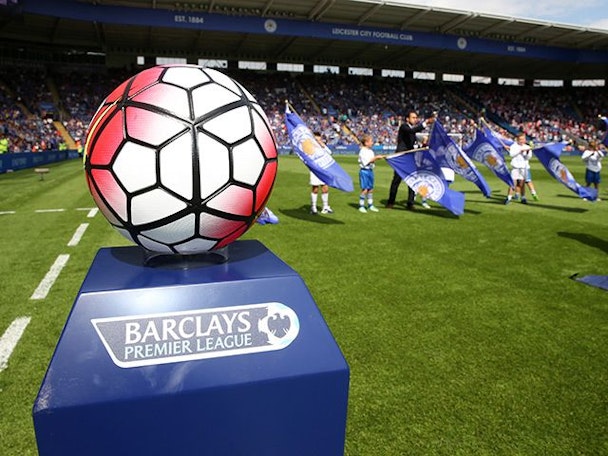Do football fans only share when they are winning?
In May 2016, Leicester City Football Club achieved something incredible. They became the fastest growing UK brand on Instagram.

The club's fairytale Premier League campaign earned them the title of everybody’s second favourite team. Less than 10 months after being serenaded on the King Power Stadium pitch by Italian tenor Andrea Bocelli, Claudio Ranieri has been unceremoniously dumped by the club he led to the title. Leicester City’s power brokers lost the faith, but have their social media fans remained loyal or avoided this ‘reflected failure’?
VIDEO: Watch @AndreaBocelli kick off the title celebrations at King Power Stadium on Saturday. #havingapartyhttps://t.co/rId221wyRv
— Leicester City (@LCFC) May 9, 2016
The sweet sound of victory - 16th most shared @LCFC Twitter video of all time
Apart from being fanatical about football, the Burst Insights team also share a passion for social video. It’s why the first edition of our Putting a Price on Social Video report series was focused on the beautiful game. We found that 16 top performing Leicester City Twitter videos (out of 20 analysed) captured the jubilation and celebrations of their title win. The 33 minutes of footage generated 73k likes from Foxes fans and drew in neutrals wanting to join the Vardy inspired party.
To put that into popularity into perspective, fast forward nine months and the @LCFC average engagement prior to Ranieri’s last game in charge was 260 likes (a 5k drop) per clip. It is also trending below their all-time average of 299 likes per Twitter video post. Looking at these stats, you might be asking where the fans have gone. The reality is that the majority of this engagement will have come from casual Leicester City fans, not their loyal and mostly long suffering supporters (a club 99% of football fans frequent).
What an incredible moment! #lcfc #havingapartyhttps://t.co/WpG48tKXdJ
— Leicester City (@LCFC) May 7, 2016
Ranieri getting his hands on the trophy - the 2nd most shared @LCFC Twitter video of all time
The legacy of Ranieri’s title winning team has been increased exposure in emerging markets, such as Asia. Recent studies suggest football fans in Asia are casual in the extreme. Despite Leicester’s owners hailing from Thailand, it is likely that Leicester City fans across that country follow the regional trend of supporting multiple clubs at the same time and following individual players. This could explain Leicester City’s continued popularity on Instagram (and just as likely, Snapchat), where usage on both platforms doubled in Asia during the second half of 2016.
Since the end of last season (31 May 2016), Leicester City have increased their Facebook fans by 20% and Twitter followers by 25%, compared to an Instagram rise of 85% in nine months. If this theory of a more fickle and fanned out social supporter base is correct, then the reaction of clubs to how their team is playing will have an increasingly influential role in social media performance.
CHAMPIONS PARADE: Watch the best bits from the Foxes open top bus tour of Bangkok earlier today. #havingapartyhttps://t.co/i1YCkuPkie
— Leicester City (@LCFC) May 19, 2016
Bangkok bus tour - the 70th most shared @LCFC Twitter video of all time
The sacking of Ranieri also brings the issue of social media trolling into a football focus. Their situation isn’t a unique one, in fact it has become an annual ritual. Incredibly four out of the last five title winning bosses have been fired the following season. Football is indeed a funny old game. It is also an emotional one, triggering increased content engagement during the good times as well as the bad.
Content produced by elite sports clubs has replaced the pub as the forum for football fans to express their support and release some ridicule, in less than equal measures. While 7.6k people ‘liked’ the @LCFC club statement post on Twitter at the time of writing, it received over 8k comments and direct replies. The same post on Facebook generated 30k reactions within 24 hours, over 50% of which were angry, compared to less than 25% support. Marketers came to terms some time ago that they did not own their own story on social media, consumers did. The new reality for elite sports clubs is that when times are bad, even their own fans aren’t in control of their content.
So what can digital media teams at clubs do about it? The answer is to not down tools when it feels like the football world is against you. They must be brave in the tackle and aim to level the playing field for their true fans. The goal must be to tap into the emotions of their supporters that are not defined by short-term success or their turn on the managerial mocking merry-go-round.
WATCH: Claudio Ranieri was greeted with a champagne reception by the press after winning the @premierleague.https://t.co/nW7nnMW7Jo
— Leicester City (@LCFC) May 5, 2016
Champagne media reception for Ranieri - the 29th most shared @LCFC Twitter video
Simon Bibby is head of research at Burst Insights
